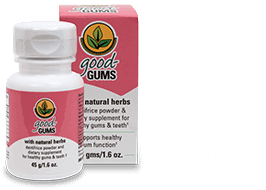When we pull back our lips and look in our mouths, we see our teeth and a lining of gums that covers where the roots of the teeth meet the jaw bone. But from the bone at the depths to the gums at the surface, there’s more going on than meets the eye.
For starters, a tooth isn’t attached to the jawbone like a building in Manhattan that’s cemented to bedrock. It’s more like a building in earthquake-prone Tokyo, anchored to many strong rubber mounts, which in turn are anchored to the underlying foundation. When the inevitable strong forces are brought to bear, the Tokyo building (and the tooth) can wiggle a little bit rather than crack or break. In Tokyo the inevitable forces are from earthquakes. In our mouths the inevitable forces are from biting, chewing and the occasional bump to the face.
The “rubber mounts” for teeth are thin strands of live connective tissue called periodontal ligaments, connecting the roots of a tooth to the alveolar bone sockets for the tooth, not only on the bottom but also along the sides of the roots. There are many thousands of these tiny fibrous strands all around the root of a tooth. They are vibrant enough that their pressure receptors can tell the brain how much they’re being stretched and therefore how much force is being applied to each tooth, so that we can “feel” our teeth despite their not having nerve endings on the enamel surface. The periodontal ligaments are also actively involved in the microscopic absorption of bone minerals and reformation of bone. The cells of all bones are steadily being replaced, but most quickly in the jaw bone. The highly vigorous life processes in this vicinity help the body cope with ongoing stresses, such as tooth movement. It turns out that even the most mechanical arrangements of the body are dynamic and alive.
The gums are a main participant in making all this work. Around the tooth root and the alveolar bone is the thicker portion of gums made up of loose connective tissue called the lamina propria. This gives the gums the structure it needs to hold its shape and to hold itself in place; it contains capillaries to feed the soft tissues and provides a cushion against whatever hard objects may be taken into the mouth. Being less rigid and more rapidly growing than tooth or bone, it becomes a prime location for immune system defenses, such as white blood cells, if bacteria start to invade toward the tooth-supporting environment. The gum tissue becomes the battleground before the tooth-supporting structures can be attacked. This tissue is not swollen when the gums are healthy.
Covering the loose connective tissue of the gums is the outer lining of mucous membrane gum cells called the gingival epithelium. It’s involved in protection, sensation, absorption, and selective permeability. It separates and protects the internal tooth-enveloping environment from the bacteria-intensive and food-digesting environment of the mouth. It’s a fairly tough and impermeable lining due to keratin, a cytoskeletal protein. To keep the underlying environment sealed from exposure, a healthy epithelial layer is free of sores or lesions and is held tightly to the exposed upper tooth by special gingival fibers that run through the gum’s connective tissue from the tooth to the underside of the epithelial lining. But the epithelium is not just a passive barrier against microbes and foreign particles. It’s fast healing and also draws on immune system defenses quickly when under attack.
Healthy gums are pink near the teeth, not white or red. Their actual color varies according to an individuals’ complexion. They often have a stippled (orange peel texture) appearance and are firm and resistant to movement. They are tight to the teeth, with a scalloped appearance around each tooth. The gum thins out almost to a knife edge, and there is a barely perceptible ‘turtle neck” collar of gum tissue and a slight indentation (called the gingival sulcus), where the gum meets a tooth. Normally in a healthy mouth this is not deep, certainly not deep enough to be classified as a gum pocket.
Healthy gums completely fill the spaces between the teeth. They aren’t swollen with shiny and puffed out epithelium between the teeth (as in gingivitis), and the spaces aren’t absent and empty (as in periodontal disease). The gums also don’t bleed when you brush your teeth, eat crisp apples and crusty bread, or when a dental hygienist cleans your teeth.
Healthy gums have virtually no obvious sensation. (Unfortunately, neither do unhealthy gums until the condition has deteriorated a bit.)
Healthy gums also are regularly washed by saliva, which is beneficial both for teeth and gums. Saliva somewhat neutralizes acids in the mouth, thereby making the mouth environment less hospitable for acid-loving, plaque-causing bacteria. Unchecked acid promotes bacteria and their production of plaque. Acid also acts to break down tooth enamel, but this is counteracted by saliva’s minerals (particularly calcium and phosphate) that help to strengthen the microscopic structure of tooth enamel in a process called saliva remineralization. There’s a virtually imperceptible back and forth dynamic of enamel breakdown and enamel renewal every time we eat, as food becomes acidic in the mouth and saliva flows onto the gums and teeth in response to eating.
To keep gums healthy, it’s important to keep the plaque-forming bacteria in check and to keep providing the gum tissue its proper nutrients.
For the most healthy gums, order Good-Gums today.


